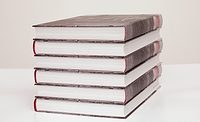FEICA Commissions Study on Safety of Packaging Hot Melts
Three approaches were used in the study: extraction of hot melt, migration simulation of hot melt, and real storage tests.

FEICA recently announced that it had commissioned a study from Laboratory Lommatzsch & Säger to look into the potential migration of mineral oil hydrocarbons from typical packaging hot melts. The purpose of the study, titled “Extraction, migration simulation and storage test regarding oligomeric hydrocarbons from hotmelt adhesives used in cardboard packaging,” was to determine the safety of hot melts in adhesives applications, specifically in cardboard food packaging.
The conclusion was that all investigated hot melts were safe for use in the tested application. The study used a systematic approach to examine the migration from hot-melt adhesives and considered correlation factors.
“Laboratory Lommatzsch & Säger was commissioned by FEICA as they are experts in the field,” said Jana Cohrs, FEICA’s executive director of Regulatory Affairs. “The study revealed that the investigated hotmelts meet the BfR draft criteria concerning MOAH, if interpreted as mineral oil.”
Typical hot-melt raw materials mainly comprise polymers, paraffinic waxes, hydrocarbon resins, and additives. Although the single components might be all listed in the 10/2011 positive list, oligomers from the hydrocarbon resins in particular may partly contribute to mineral oil saturated hydrocarbons (MOSH)/mineral oil aromatic hydrocarbons (MOAH) fractions in liquid chromatography-gas chromatography with flame ionization detector (LC-GC-FID) analysis. When applying further analytical techniques (e.g., GCxGC-TOF-MS), it is possible to distinguish hydrocarbon resin oligomers from the hydrocarbons (MOH) derived from mineral oil.
Three approaches were used in the study: extraction of hot melt, migration simulation of hot melt (gaseous phase), and real storage tests (food in a cardboard box sealed with hot melt). Relationships and comparisons of the results of the tests were also considered.
As expected, extraction was determined not to be a meaningful approach to estimate migration because this approach severely overestimates reality. In the extraction approach, the solvent extracts the total available hot-melt hydrocarbons and does not consider just the part that could migrate. Real storage tests, on the other hand, are prohibitive because they take too much time to carry out. The study could show that simulation is the preferred way forward. Migration simulation is able to correctly predict the real situation in a packaging application, when the analysis is focused on saturated hydrocarbons and aromatic hydrocarbons (MOSH/MOAH).
A calculation model was developed based on modified polyphenylene oxide (MPPO) migration simulation (Tenax®, 40°C, 10 days). The model predicts real migration in terms of indirect contact concerning storage of dry foodstuff for 12 months at room temperature. The model will help prevent testing setups that are inappropriate and interpretations that are incorrect.
In summary, all investigated hot melts (typical food packaging hot melts) were demonstrated in the study to be safe* for use in the tested application. The hot melts would therefore meet BfR draft criteria concerning MOAH, if interpreted as mineral oil. Of the three methods used in the study, extraction provided no meaningful approach to estimate migration. Simulated real storage proved to be the best method.
“We are glad that the results of the study could underpin our approach as described in an earlier MOH FEICA factsheet,” said Alexandra Ross, product regulatory specialist EIMEA at H.B. Fuller Deutschland GmbH and chair of the FEICA Paper & Packaging Technical Working Group. “With the storage of real packed food over 12 months, the applied hotmelts could show pretty low migration tendency, especially for the fraction of MOAH. The structured approach with typical hotmelt variations together with the competent analysis by Lommatzsch & Säger Laboratories has led to a great document with understandable arguments, also for the right choice of test method. This report will certainly help us in any discussion with our customers, when the subject of MOSH and MOAH is raised.”
The full report is available here.
*In this context, “safe” means that the hot melts would meet BfR (Bundesinstitut für Risikobewertung) draft criteria concerning mineral oil aromatic hydrocarbons (MOAH), if interpreted as mineral oil.
Looking for a reprint of this article?
From high-res PDFs to custom plaques, order your copy today!





